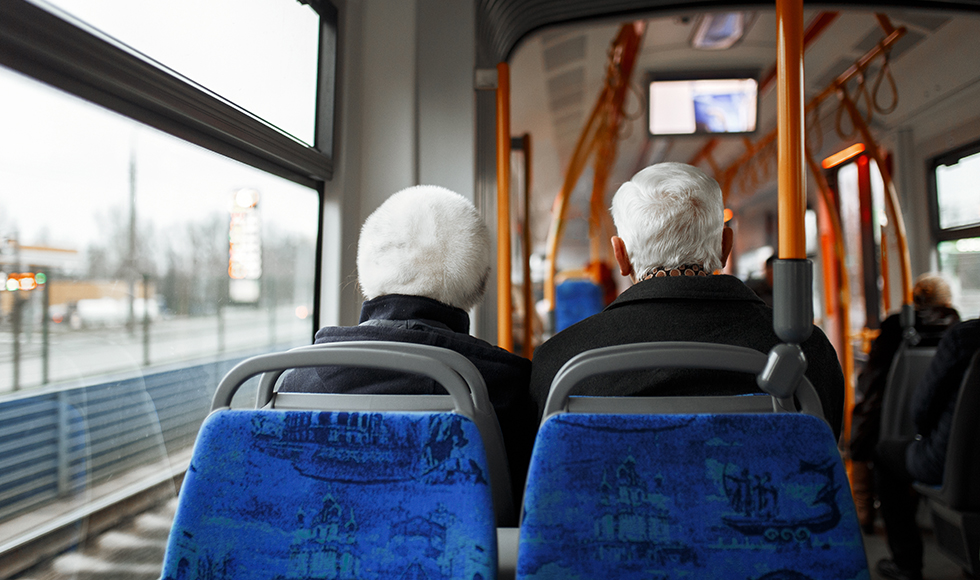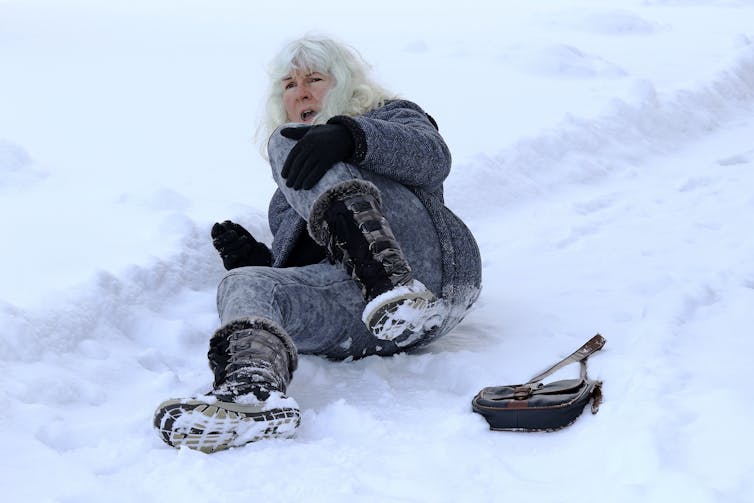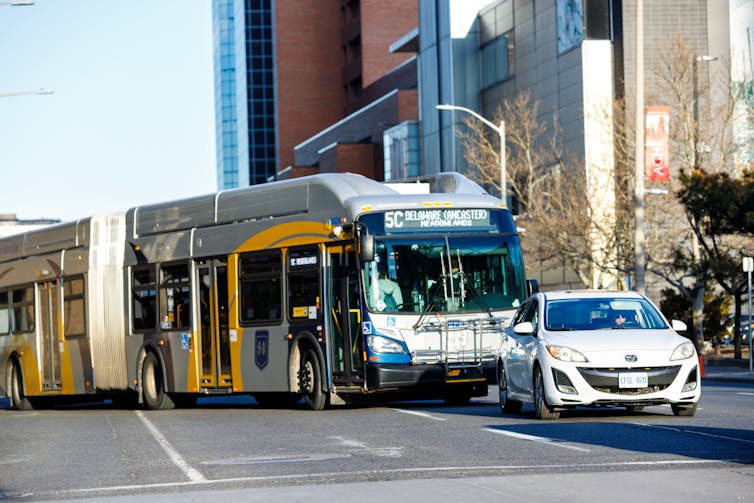As Canada’s population ages, older adults need better access to public transit

Elderly users of public transit face complex challenges to their mobility. (Shutterstock)
BY Léa Ravensbergen
December 9, 2020
Most older adults’ primary travel mode is the car, but as health challenges grow, many must either reduce their driving or give up the keys. Driving cessation is a difficult and emotional transition for many older adults.
Public transit can be a way to maintain older adults’ independent mobility. However, little research has focused on older adults’ experiences on public transit. My postdoctoral research at the McMaster Institute for Research on Aging fills this gap through interviews with older adult public transit users in Hamilton, Ont.
Getting to the bus stop
Bob (not his real name) is one of 32 older people I interviewed during my research. He is 79, uses a walker and lives in downtown Hamilton. Ever since he gave up his driver’s licence in 2016, the bus is Bob’s primary mode of transportation. Bob has the same wants and needs as other people — to shop for food and other items, attend appointments, visit friends and family and take part in activities that interest him.
But for Bob and many older people like him, the everyday act of using public transit can pose monumental challenges and generate real worries — ones that may not even occur to other transit users.
A lot of thought and consideration goes into planning trips, starting with the question of whether it will be safe to go out at all — which is potentially a matter of life and death to a vulnerable person for whom a serious fall could be catastrophic.

(Shutterstock)
The first barrier is the walk to the bus stop, both in terms of distance and weather, especially in winter, when the way may not be clear. In Bob’s words, “the sidewalks that are not shovelled are a real problem with the walker.”
When the sidewalks are not clear of dangerous snow and ice, many of my research participants told me they simply stay home. This can result in basic needs going unmet, such as having groceries in the house or seeing friends or family.
Riding the bus
Getting on and off the bus is another daunting challenge for many, including Bob, who struggles to lift his walker onto the bus.
He worries about taking too long and being in the way of other passengers when boarding and disembarking. He knows the bus is on a schedule and other passengers who expect it to be on time might find it annoying that he takes so long, but he can’t move any quicker.
Once Bob is on the bus, he needs to find a seat quickly, because he cannot stay upright while the bus is in motion. One of his biggest worries is “drivers leaving before I am sitting down.”
Even getting a seat is not guaranteed. Most of the research participants I spoke to sometimes find there are no empty seats, and they are embarrassed about asking for one, despite the signs that remind riders to reserve the first seats for passengers like them.
Further, many cannot sit at the elevated back of the bus, where there are often more free seats, because that would require climbing two more steps, possibly with the bus in motion.
Bob always exits from the front of the bus, even though others exit from the rear. He doesn’t like blocking the entry doors, but the front of the kneeling buses can be lowered to the curb, which helps him disembark with his walker.

(Shutterstock)
Mobility work
All these contingencies that cause Bob and his peers to have to go to extra trouble just to get around, including worrying, are what I call mobility work. Able-bodied passengers do not have to do this work, and in many cases are not even aware of what a burden it can be for transit users experiencing declining ability, in this case older adults.
As another research participant shared: “Old people are invisible. That’s, you know, that’s just how it is….”
Although the study took place in Hamilton, it demonstrates a broad ableist bias in transportation planning across Canada and elsewhere: transportation officials do not plan their services with enough attention to older adults.
This action is urgent. In Canada, population projections estimate that seniors will make up almost a quarter of the population by 2031. This research highlights that concrete action is necessary to minimize this mobility work to make it easier for older adults to travel using the city bus.![]()
Léa Ravensbergen, Postdoctoral Fellow, Institute for Research on Aging, McMaster University
This article is republished from The Conversation under a Creative Commons license. Read the original article.


